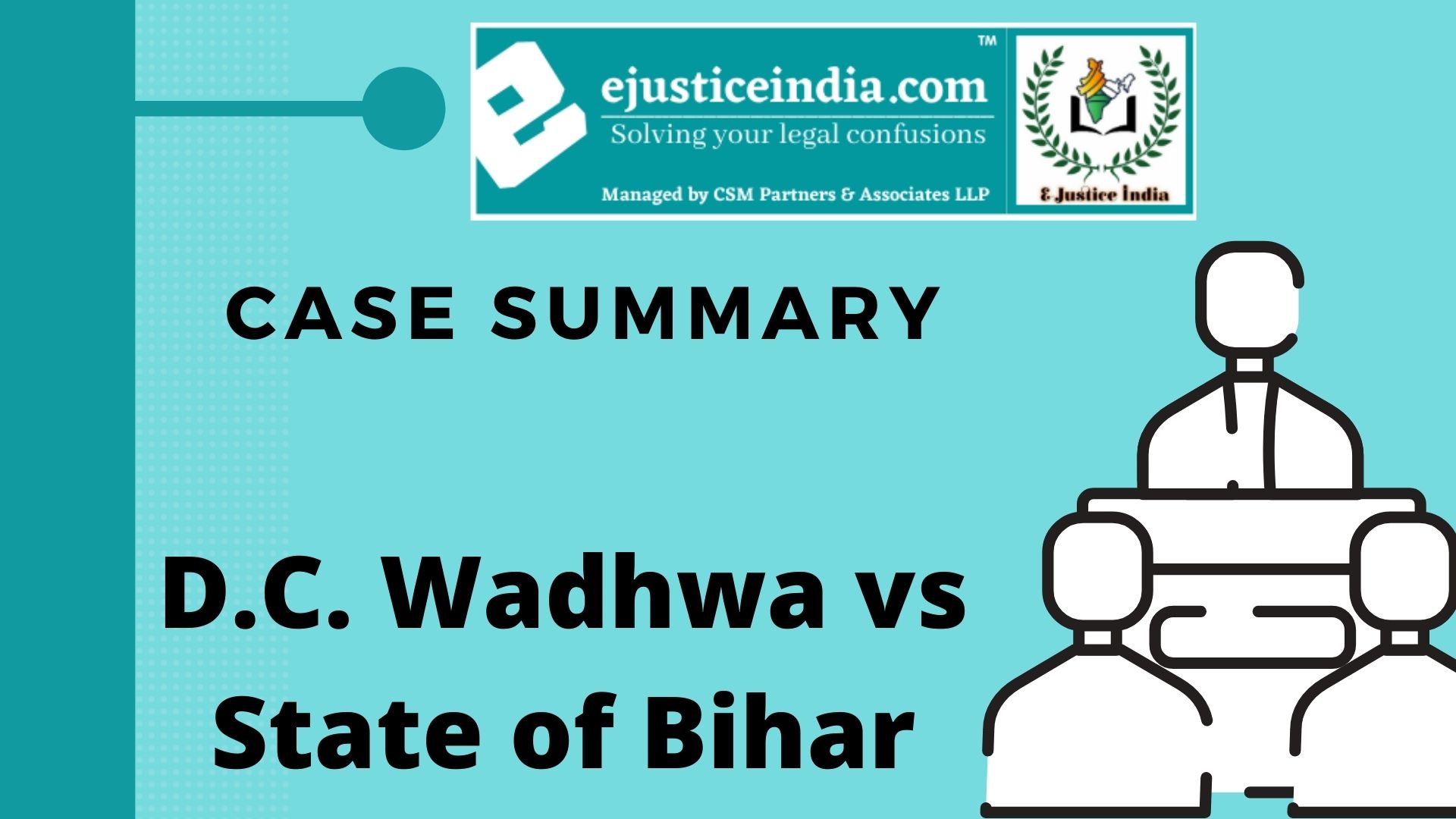Case Summary : Ashok Kumar Thakur v. Union of India
Author : Kirti Kumari
Citation
1972 (1) SCC 660
Bench
Dr. Arijit Pasayat, C.K. Thakker, R.V. Raveendran, K.G. Balakrishnan, Dalveer Bhandari
Introduction
This case was based on Article 15 of Indian Constitution. This Article talks about the prohibition of discrimination on grounds of Religion, Race, Cast, Place of birth and Sex.
Facts
In this case petitioner was challenged on the policy of 27% reservation for the Other Backward Classes (OBCs) contained in the Central Educational Institutions Reservation in Admission Act 2006. The Act is challenged on the grounds of the Union of India has failed in performing the constitutional and legal duties toward the citizen and that the Act would have wide ramifications and ultimately result in dividing the country on a caste basis.
Issues
- Whether the 93rd Amendment of the constitution is against the “basic structure” of the Constitution?
- Whether the exclusion of minority educational institutions from Article 15(5) is violative of Article 14 of Constitution?
- If so, whether “Creamy Layer” is to be excluded from SEBCs?
Application of Law
- Article 14 of the Constitution of India (equality before the law).
- 93rd Constitution Amendment Act, 2005.
- The Central Educational Institutions Act 2006.
The Petitioners
The petitioners argued that the State cannot bound to treat some class for all time to those citizens who socially and educationally backward class of citizens. The State violated the rights guaranteed under Article 14 of the Constitution.
The Respondents
The respondent argued that the petitions should be heard by a Bench of at least five Judges as they raised both substantial questions of law as well as interpretation of the Constitution.
Judgement
In this case Court held that the Constitution (Ninety-Third Amendment) Act, 2005 does not violate the “basic structure” of the Constitution.
In this case Union of India asserted that reservation whether in employment or in education is not violative of the basic structure or equality code of the Constitution.
In this case the subject matter is challenge not only the policy of granting 27% reservation as being arbitrary and ultra vires of the constitution, but also the method of adoption to define and calculate the population of OBCs in the country.
This case is Shifting from the OBC estimate, the another disputed area revolved around the inclusion of the creamy-layer within the purview of reservation under the Act. It is held by the Court that the non-exclusion of creamy-layer would have an effect on the invalidity of the statute.
According to the Court did not think that there has been any infringement of the rights guaranteed by Article 14. It was appropriate that the matter should be heard by a larger Bench.
The Judge move to the suggestion list of issue that the larger court should considered and validity of the 2006 Act.


